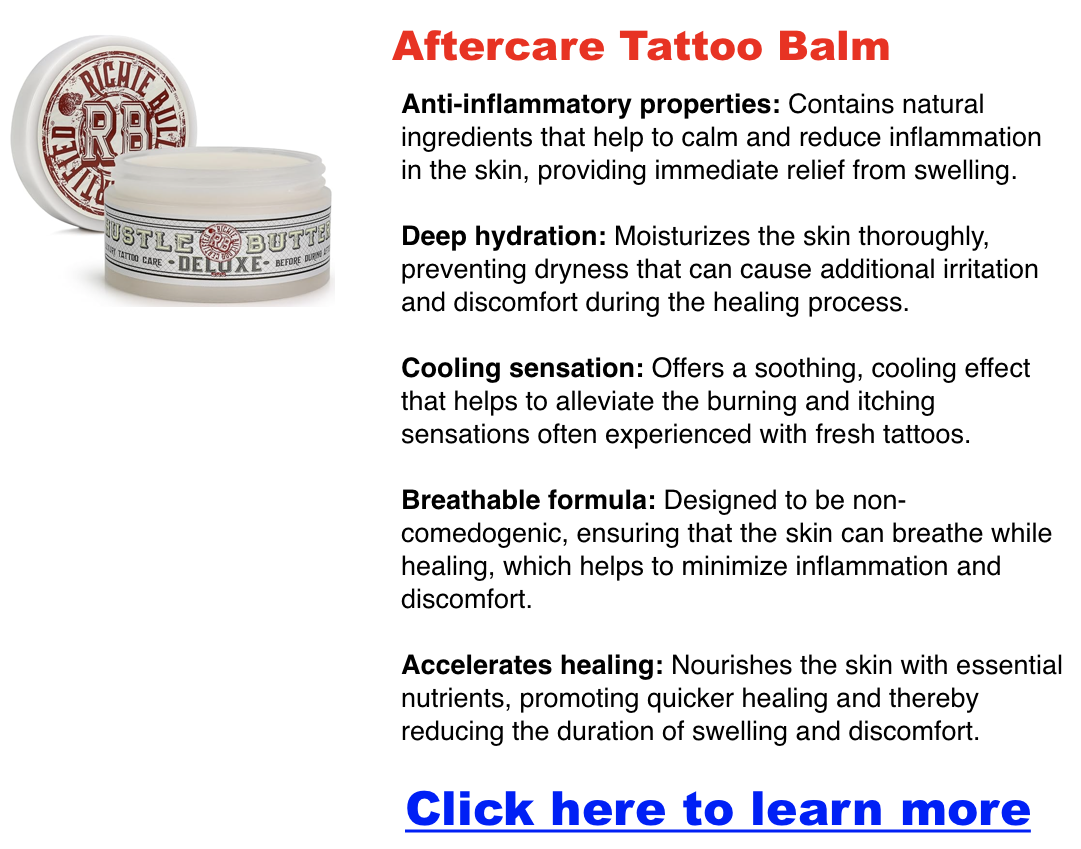Arm Swollen After a Tattoo? What You Need to Know
Getting a tattoo is an exciting and meaningful experience, but noticing your arm swelling afterward can be unsettling. Don’t worry—swelling is often a normal part of healing. Let’s break down what’s happening, how to care for it, and when to take action if something feels off.
Is Swelling Normal After a Tattoo?
Yes, some swelling is completely normal after getting a tattoo. Your body sees the tattooing process as a minor injury, and swelling is your immune system’s way of healing and protecting the area. This is especially common for larger tattoos or tattoos near joints, like your wrist or elbow. Most of the time, the swelling subsides within a few days.
Why Does Swelling Happen?
There are a few reasons why your arm might swell after a tattoo:
- Healing Response: The tattoo needle creates thousands of tiny punctures in your skin, and your body sends fluids to the area to help it heal.
- Tattoo Size and Placement: Bigger tattoos or those close to joints may cause more noticeable swelling.
- Ink Reaction or Skin Sensitivity: Some people may have mild sensitivity to the ink or the repeated trauma of the tattooing process.
How to Reduce Swelling
- Elevate Your Arm: Keeping your arm elevated can reduce blood flow, which helps minimize swelling.
- Apply a Cold Compress: Use a clean cloth with a cold pack for 10-15 minutes. Avoid placing ice directly on the skin.
- Avoid Tight Clothing: Wear loose-fitting clothes that won’t rub against your tattoo. This reduces irritation and promotes healing.
- Stay Hydrated: Drinking water helps your body recover and flushes out any toxins.
- Rest: Give your body time to heal by avoiding activities that might irritate the tattooed area.
When to Worry About Swelling
While some swelling is normal, there are times when you should be concerned. Keep an eye out for these warning signs:
- Swelling That Gets Worse Over Time: If the swelling increases after 48 hours instead of going down, this could indicate a problem.
- Red Streaks or Pus: These are signs of a potential infection and should be addressed immediately.
- Severe Pain or Fever: If the area is excruciating, hot to the touch, or you have a fever, it’s time to see a doctor.
- Allergic Reactions: Symptoms like hives, severe itching, or swelling that extends beyond the tattooed area could signal an allergy to the ink.
How Long Does Swelling Last?
For most people, swelling peaks within the first 24-48 hours and starts to go down afterward. By the end of the week, it should be almost gone. If your arm is still swollen after a week, especially if other symptoms accompany it, reach out to whoever did your tattoo or a healthcare provider.
Can You Take Medication to Help?
Ibuprofen can help reduce swelling and discomfort.
Don’t Be Afraid to Ask for Help
Contact your tattoo artist if you’re ever in doubt about your tattoo’s healing process. They’re experienced in aftercare and can give you advice tailored to your situation. Get medical advice for any serious concerns.
Take Care of Your Ink and Yourself
Swelling is often a natural part of your tattoo’s healing journey, but knowing what to expect can make the process less stressful. By following these tips and staying alert to any unusual symptoms, you’ll be able to enjoy your new tattoo without worry.
- Birth Flowers Chart by Month
- Aurora Borealis Tattoo
- How Printable Tattoo Stencils Work (and How to Make Your Own from Any Design)
- Arm Swollen After a Tattoo? What You Need to Know
- Tattoo Aftercare: How to Reduce Tattoo Swelling & Discomfort
- Tattoo Aftercare Products & How They Fit Into Caring for Your Tattoo
- How To Brighten a Tattoo
- American Traditional Tattoo Style
- Best Tattoo Lotions For New or Old Tattoos
- This Too Shall Pass Tattoo
- Flowers (7)
- Halloween (5)
- Uncategorized (93)
